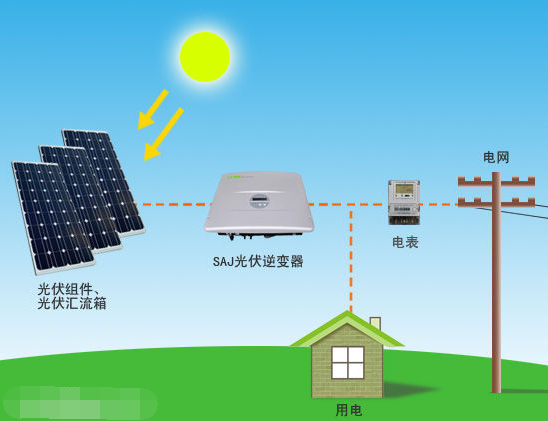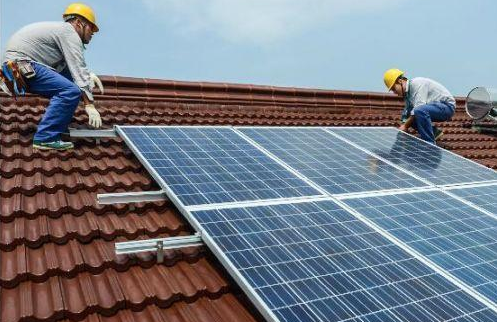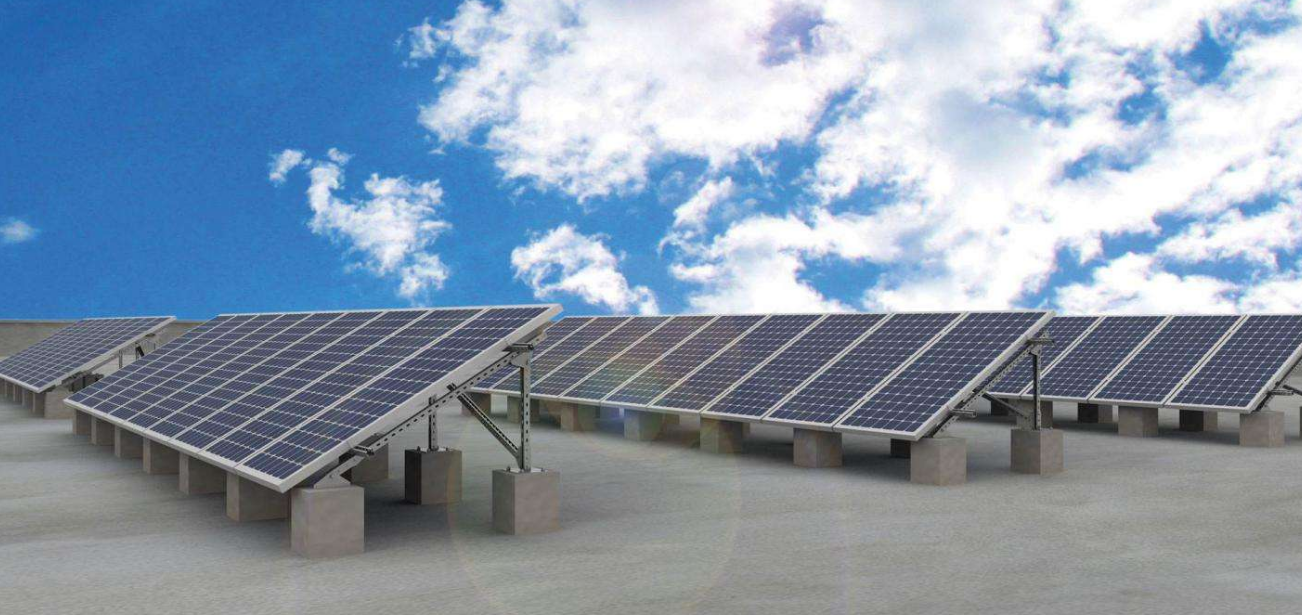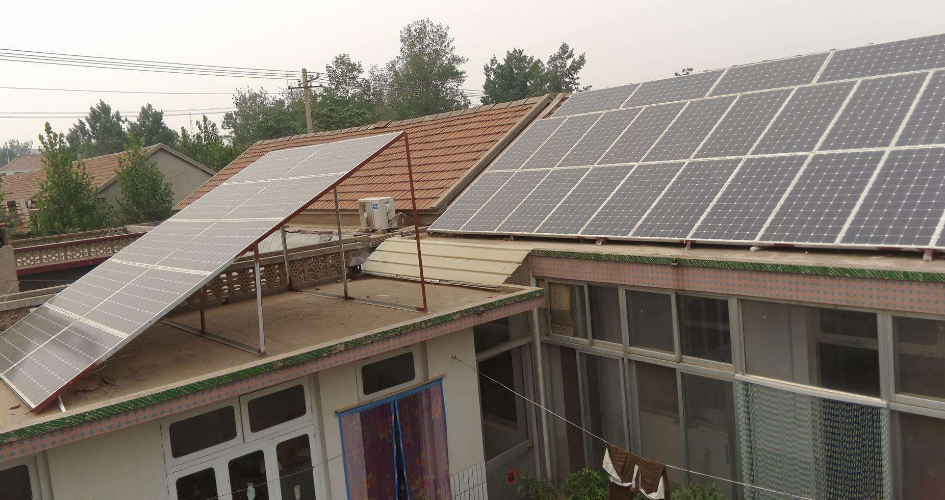Photovoltaic power generation is a technology that directly converts light energy into electrical energy by utilizing the photovoltaic effect of the semiconductor interface. It is mainly composed of three parts: solar panel (component), controller and inverter. The main components are composed of electronic components. The solar cells are packaged and protected in series to form a large-area solar cell module, and then combined with a power controller and other components to form a photovoltaic power generation device.
The main principle of photovoltaic power generation is the photoelectric effect of semiconductors. When a photon is irradiated onto a metal, its energy can be completely absorbed by some electron in the metal. The energy absorbed by the electron is large enough to overcome the internal gravity of the metal and escape from the metal surface to become photoelectron. A silicon atom has four outer electrons. If five atoms of outer electrons, such as phosphorus atoms, are doped into pure silicon, they become N-type semiconductors; if pure silicon is doped with three outer electrons, such as A boron atom forms a P-type semiconductor. When the P-type and the N-type are combined, the contact surface forms a potential difference and becomes a solar cell. When the sunlight hits the P-N junction, the holes move from the P-pole region to the N-pole region, and the electrons move from the N-pole region to the P-pole region to form a current.
The photoelectric effect is a phenomenon in which light causes a potential difference between a heterogeneous semiconductor or a different portion where a semiconductor and a metal are combined. It is first a process in which photons (light waves) are converted into electrons, and light energy is converted into electric energy; secondly, a voltage process is formed.

After the polycrystalline silicon is ingot, broken ingot, sliced, etc., it is made into a silicon wafer to be processed. A P-N junction is formed by doping and diffusing a trace amount of boron, phosphorus, or the like on the silicon wafer. Then, by screen printing, the fine silver paste is printed on the silicon wafer to form a grid line, which is sintered and simultaneously formed into a back electrode, and an anti-reflection coating is applied on the surface of the gate line, and the battery sheet is Made to date. The cell array is combined into a battery pack to form a large circuit board.
Generally, an aluminum frame is wrapped around the assembly, the front cover glass, and the reverse side mounts the electrode. With battery components and other ancillary equipment, you can form a power generation system. In order to convert direct current to alternating current, a current converter is required. It can be stored in the battery after power generation, or it can be input into the public power grid. Among the cost of power generation systems, battery components account for about 50%, current converters, installation costs, other auxiliary components, and other expenses account for another 50%.
Does the home photovoltaic power station have radiation?The household photovoltaic power station is composed of a photovoltaic module, a photovoltaic inverter, a photovoltaic support, and a photovoltaic cable;
Photovoltaic power generation converts light energy directly into DC power through the characteristics of the semiconductor, and then converts the direct current into an alternating current that can be used by us through the inverter. There are no chemical changes and nuclear reactions, so photovoltaic power generation will not have short-wave radiation.
Therefore: Photovoltaic power generation is non-polluting, non-radiative, and inexhaustible clean energy.

Because the PV module is not radiated, it can reflect some harmful UV rays in the sun, so the PV module will not only harm the Hazard but also help us to reflect some harmful UV rays!
At the same time, photovoltaics are clean energy. We use photovoltaic power plants to generate electricity, which is equivalent to saving 0.4 kilograms of standard coal, while reducing pollution emissions by 0.272 kilograms of carbon dust, 0.997 kilograms of carbon dioxide, 0.03 kilograms of sulfur dioxide, and 0.015 kilograms of nitrogen oxides. .
In this way, our air quality will get better and better, and the smog will be reduced. It will only benefit us a lot!

Household roofs generally have a load-bearing capacity of 200KG per square meter. Currently, the polycrystalline silicon photovoltaic modules and bracket systems commonly used are 30KG per square weight, and the bearing problem is also the first consideration for each PV power plant design. Professional design will fully consider Fixed load on the roof, wind load, snow load, seismic load, etc.
Therefore, there is no problem with the roof-mounted photovoltaic power station in advance.

First, let us review the development of the national policy on distributed PV. On October 26, 2012, State Grid Corporation issued the “Opinions on Doing a Good Job in Grid-Connected Services for Distributed Photovoltaic Power Generationâ€; on August 12, 2013, China Southern Power Grid issued “China Southern Power Grid Corporation to further support the development of new energy sources such as photovoltaicsâ€. Guiding Opinions; Since then, the design of rooftop photovoltaic power generation schemes, the grid-connected policy channel of the domestic distributed photovoltaic market has gradually opened, and the number has emerged throughout the country. A group of household users of photovoltaic power generation systems that “eat crabsâ€. Subsequently, various minor problems were exposed: the grid connection rules were unclear, resulting in a long period of time, subsidies and on-grid electricity charges were not paid in time, and users received subsidies. Who will bear the votes and tax points. . . . . . Throughout the year 2013, it was called “Distributed Photovoltaic Year†by the industry, but it was also a year of all kinds of wrangling and various entanglements.
On July 29, 2013, the Ministry of Finance and the State Administration of Taxation have issued the Notice on Temporary Exemption of Value-Added Taxes and Business Taxes for Some Small and Micro Enterprises. In June 2014, the State Administration of Taxation issued another issue on the purchase of power products from the State Grid Corporation for the purchase of distributed photovoltaic power generation projects. Announcement of relevant issues such as ticket issue, since then, the generation of household photovoltaic power generation. Ticket and tax issues are solved: residents' PV power station users' electricity sales revenue is definitely less than 20,000, so it is classified as a small and micro enterprise category, exempt from VAT and business tax, so you can get the electricity price of the on-grid price and 0.42 yuan in full. State subsidies, which greatly increase the investment income of home photovoltaic power stations.
Do you have a lot of advantages in home photovoltaic power generation? In China, rooftop photovoltaic power generation, installation of home photovoltaics has the following advantages:
Quick effect
In China, the family photovoltaic power station is the fastest application, the fastest installation, the home-style roof photovoltaic power generation, the fastest grid connection, the fastest subsidized application form. Generally, it takes only 10 working days to apply for a home photovoltaic power station. The advantages and disadvantages of rural rooftop photovoltaic power generation can obtain access application opinions; the whole installation process usually does not exceed 3 days; the grid connection acceptance generally does not exceed 7 days; therefore, the whole process It can be completed in as little as 15 days. The subsidy is generally not issued for more than three months.
Small investment
In China, the average urban villa roof, the installation capacity is mostly between 5-8kWp, individual villas or elevated roofs can be installed above 10kWp; and the average 5-8kWp solar system investment is only 6-10 million. Although the average rural house has a large roof, the subsidy method in China is self-use and surplus electricity. The general electricity consumption will not be too much. Therefore, the rural roof installation capacity can be 3-5kWp. - 50,000, you can enjoy the solar system.
The main pain points in obtaining customers in foreign trade are fierce market competition, high customer acquisition costs, low customer stickiness, and single marketing methods. With the changes in the market environment, traditional marketing methods
Orange sample
YIWU BEAUTYPLUS ART NAIL CO., LTD. , https://www.cn-gangdao.com